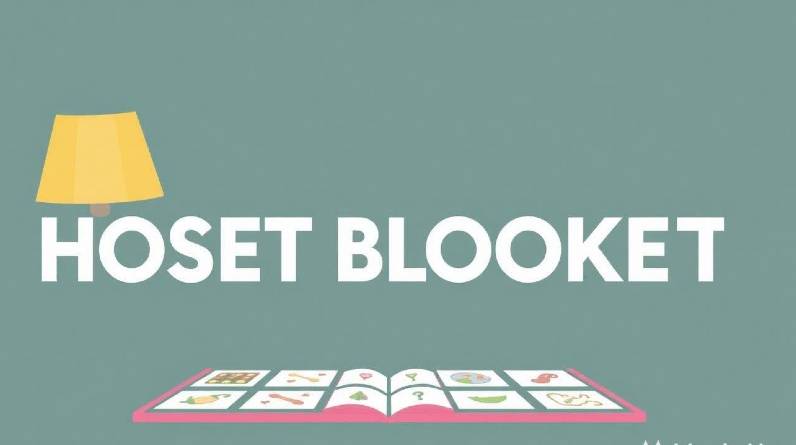
Blooket has revolutionized how educators engage students in both physical and virtual classrooms. But while many know how to play, few truly master the role of the host. This article explores how to “Hoset Blooket” (host Blooket) effectively—not just technically, but strategically—for maximum educational impact.
You can get started by visiting the official Blooket website.
What Does It Mean to “Hoset Blooket”?
In Blooket lingo, a “host” is the person who initiates and controls the game session. Hosting involves more than starting a quiz—it’s about curating content, selecting game dynamics, managing participants, and analyzing performance.
Whether you’re a seasoned teacher, a student-leader, or a homeschool parent, understanding how to “Hoset Blooket” strategically can turn a casual quiz into a transformative learning experience.
Why Hosting Matters More Than Ever
In an era of short attention spans, teachers need more than worksheets. Hosting Blooket the right way means:
- Boosting engagement with gamified learning
- Adapting content for different learning styles
- Tracking comprehension in real-time
- Creating a collaborative classroom culture
Getting Started: Step-by-Step Hosting Process
1. Sign Up and Log In
Visit blooket.com, create an account (Google sign-in available), and access the dashboard to start creating or exploring question sets.
2. Find or Create a Question Set
You can:
- Choose from over 20 million sets in the Discover section
- Build your own quiz under “Create Set”
- Add images, math symbols, and custom answer options
Pro Tip: Use Bloom’s Taxonomy to build higher-order thinking questions.
3. Choose the Right Game Mode
Each game mode fits different learning objectives:
| Game Mode | Best For | Description |
| Gold Quest | Vocabulary & memorization | Students answer questions to collect gold |
| Tower Defense | Strategic thinking | Build towers as you answer correctly |
| Battle Royale | Competitive review | Head-to-head quiz faceoffs |
| Café Mode | Time management | Serve customers by answering questions |
| Crypto Hack | Problem-solving | Steal points through correct answers |
Switch modes weekly to avoid repetition and keep students excited.
4. Configure the Game Session
Before clicking “Host Now,” set:
- Time limits
- Randomization of questions
- Power-up settings
- Player name options (nicknames or ID-based)
Then click “Host Game” to generate a 6-digit join code.
How to Hoset Blooket with Purpose
Align Blooket with Learning Goals
Instead of playing for fun alone, define your educational outcome:
- Reviewing math formulas?
- Practicing grammar?
- Reinforcing science vocab?
Structure your question sets and game selection accordingly.
Example: Use Tower Defense mode when teaching cause and effect in history or science.
Encourage Student-Created Content
Allow students to host their own Blooket games:
- Assign content creation as homework
- Let them present games during class
- Facilitate peer-to-peer learning
This not only builds digital literacy but boosts ownership and deeper content understanding.
Leverage Data for Feedback Loops
At the end of each session, review:
- Correct vs. incorrect responses
- Average response time
- Most missed questions
Use this to:
- Identify knowledge gaps
- Adjust your instruction
- Form study groups
Integrating Blooket Into Your Weekly Lesson Plan
| Day | Activity | Blooket Use Case |
| Monday | Pre-assessment | Quick Blooket quiz warm-up |
| Wednesday | Group collaboration | Use Café Mode for team gameplay |
| Friday | Exit Ticket & Review | Host Battle Royale or Gold Quest |
| Homework | Independent study | Assign Tower Defense in HW mode |
Best Practices for Hosting Like a Pro
- Test Your Game Before Class: Ensure everything works on your browser/device
- Use Visual Aids: Add relevant images to your question sets
- Set Expectations: Review gameplay rules and behavior
- Gamify Feedback: Award badges or shout-outs for top performers
- Diversify Participation: Mix teams to include varied skill levels
Common Hosting Challenges (and How to Fix Them)
| Issue | Solution |
| Game not loading | Clear browser cache or try another browser |
| Students can’t join | Double-check code, internet connection |
| Repeated disconnections | Disable high-load background apps or use wired net |
| Wrong answers in set | Preview your set before hosting |
Stats That Prove Blooket Works
According to Blooket user feedback:
- 90% of teachers report higher student engagement
- 80% say students ask for repeat sessions
- 65% note improved quiz scores after using Blooket consistently
Source: Internal user surveys via Blooket’s educator community (2024–2025)
Bonus: Hosting Blooket Remotely
Blooket shines in distance learning environments:
- Share join code via Zoom, Google Meet, or MS Teams
- Use screen sharing for group visibility
- Follow up with HW-mode for asynchronous review
Compatible with:
- Chromebooks
- iPads/Tablets
- Smartphones
- Desktops
Comparing Blooket with Alternatives
| Platform | Best Feature | Limitation |
| Blooket | Game variety + analytics | Some premium features are locked |
| Kahoot! | Live quiz competitions | Less diverse game formats |
| Quizizz | Self-paced mode | Limited real-time dynamics |
| Gimkit | Virtual currency system | Steeper learning curve |
Conclusion: Hosting Blooket is a Teaching Superpower
When you know how to hoset Blooket effectively, it becomes more than just another edtech tool—it transforms into a dynamic, adaptive classroom assistant. It can be a warm-up, a review, a homework assignment, or even a student-led activity.
Use Blooket with intent, track your students’ progress, and turn quizzes into unforgettable adventures.
FAQs
What is a Blooket join code?
A 6-digit number generated when you host a game, used by players to join.
Do students need accounts?
No, but accounts unlock progress tracking and avatars (Blooks).
Can I assign Blooket as homework?
Yes, use Homework mode with due dates and session settings.
Is Blooket safe?
Yes, it complies with COPPA and FERPA guidelines.
How many players can join at once?
Hundreds, depending on the mode and internet strength.






